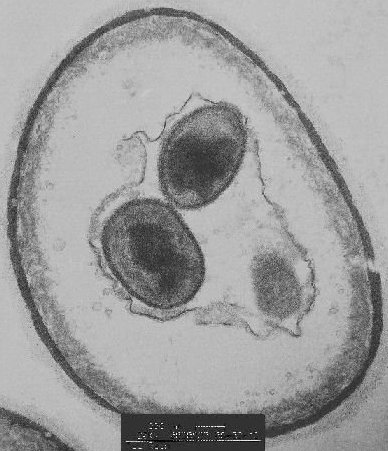It is important to note that the modality of a concept is not necessarily based on its lifelike visual representation; as demonstrated through the visual examples on pages 156 and 157, the photograph of two people talking does not necessarily have higher modality in representing the idea of how the speech process takes place -- depending on context, the diagrams in Fig 5.1 and 5.2 may actually have higher modality in their ability to represent the idea. Therefore, as an example, the diagram below may actually tell us more about about a chemical molecular process than a photograph of cells actually engaged in that process.


Although a major criterion for high modality in visual images is the appearance of something as "real," this form of "reality" is judged as a comparison with imaged produced through currently dominant conventions and technologies of visual representation (p. 159). This means that an image can have decreased modality if it is "too" real, exaggerated, or excessive, such as when colors are over-saturated or certain elements in an image are excessively detailed (such as the background in a realist painting-- this is the case because our dominant standard for high modality images are photographs, where the background is often less focused and therefore less detailed). In contrast, modality may be lower if, following the same examples, the colors in an image are not saturated enough, or if principal elements in the image are not in focus.
As an example, the following image has high modality, as it is very real by today's standards of representation. However, because of the saturation of the colors and the detail depicted in all elements of the image, the modality actually decreases slightly: the cutting board seems almost too focused and sharp for a backdrop, the color of the sliced fish is almost too saturated and the detail is slightly uncanny, and the contrast of the piece of fish against the white background seems a little too extreme.

Other elements which contribute to greater or lower modality include color differentiation (range between use of a diverse set of colors to monochrome), color modulation (example: many different shades of red on one end of the scale to only plain, unmodulated color on the other), contextualization (ranging from total absence of background to most fully articulated and detailed background), representation (from maximum abstraction to maximum representation), depth, illumination, and brightness.
The chapter also discusses modality in modern, abstract paintings, whose modality is not based on visual representation of objects, but rather, representing the process of representation.
The methodology is the sort of conduct, articulation, or lifestyle that has a place with a specific individual or gathering of individuals. A case of methods is the sort of behavior a specialist uses to treat an extremely sick patient.
ReplyDelete